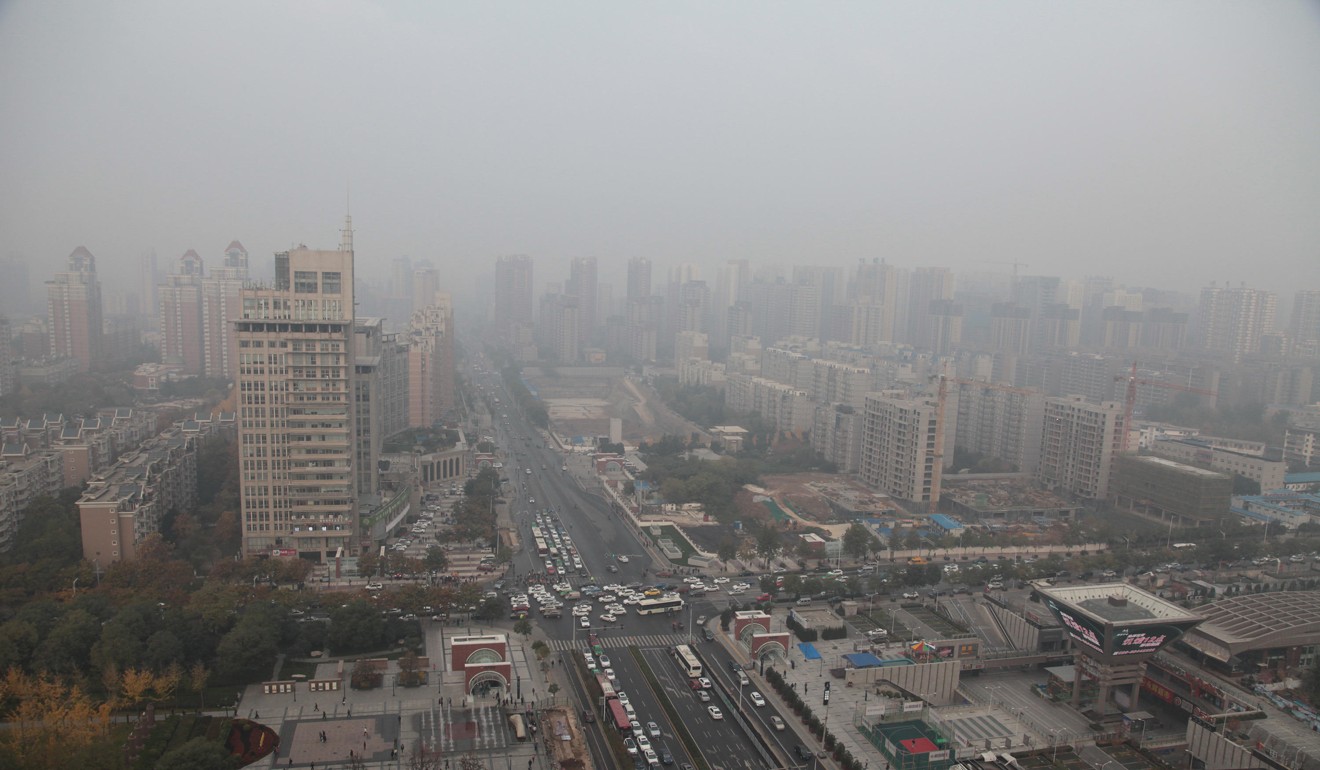
China expands battle against pollution to its top coal producing province
Environment ministry will release a three-year action plan to meet air pollution reduction targets by 2020
China will expand efforts to combat its notorious smog problem from Beijing and Shanghai and surrounds to the northwestern provinces of Shanxi and Shaanxi, the environment minister said.
It will also release a three-year action plan to meet air pollution reduction targets by 2020, Minister of Environmental Protection Li Ganjie said at a two-day annual conference that ended on Saturday.
“Winning the blue-sky battle is high on the agenda, and it will improve people’s happiness,” Li was quoted as saying in a statement on the ministry’s website.
“A key indicator of pollution control is the significant reduction of emissions of major pollutants, but also the overall improvement of the environment and the substantial improvement of green development,” Li said.
At present, the air quality target for cities at the prefecture level and above is to see more “good air” days – 292 of them, or 80 per cent of the year – by 2020.
Cities that regularly do not meet air quality standards meanwhile must reduce their average density of PM2.5 – the tiny airborne particles that are toxic to humans – by 19 per cent from 2015 levels.
Pollution control was a key task for the next three years identified by the top leadership at its annual economic work conference in December. An aggressive campaign has been under way since last year to tackle the problem, particularly in the northern region around Beijing, which is frequently shrouded in heavy smog, especially during winter.

Xie Shaodong, a professor of environmental science at Peking University, said air pollution in some inland regions, including Shaanxi and Shanxi, was not much better than in Beijing and neighbouring Hebei province.
For instance, Shaanxi’s capital Xian ranked third worst for air pollution among 74 big cities in December, according to the ministry’s latest data.
“Local complaints about air pollution are growing louder, so it’s forced the central authorities to take action,” Xie said. “Their experience tackling smog in recent years can also be put to use in these other regions.”
The authorities would continue the campaign for households to make the switch from coal to natural gas or electricity for heating in the north, the ministry said.
Meanwhile, air pollution and foreign waste processing will be top of the list for environment inspectors when they assess the environmental protection work of provincial officials this year, Li said.
A second national survey on sources of pollution will also be carried out this year to map out major threats to the environment, after the first one a decade ago.
Ma Jun, founding director of the Beijing-based Institute of Public and Environmental Affairs, said the survey was important to identify polluters for effective regulation.
“Lots of pollution sources, especially small factories, are still off the government radar, and that can be seen in the air pollution curbs over the past year,” he said.
Ma added that more government efforts were needed to treat pollution in water, soil and waste.
“The sources of pollution in water and soil are the ones that need to be identified more urgently, because treating them is difficult and costly,” he said.

